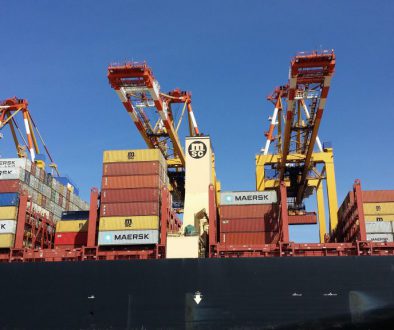The export and import of goods and services between countries is one of the main pillars of the modern free market economy. There is a consensus among economists that free trade has more positive than negative effects for economic entities, i.e. states, enterprises and consumers.
Why Is Trade So Important?
Countries derive benefits from foreign trade, mainly related to the increase in GDP resulting from greater specialization and a narrowing of economic activity. To put it simply, country A, which specializes in the production of cars, and country B, which produces mainly food, will benefit more economically when they focus on the production of products in which they specialize and trade with a partner than on the production of both on your own. Foreign trade facilitates technological progress thanks to the import of modern technologies from more developed countries. Moreover, it increases the competitiveness of domestic enterprises. In confrontation with foreign rivals, they are more mobilized to improve their efficiency, reduce costs and implement new technologies. International exchange also leads to the achievement of economies of scale, i.e. the phenomenon of reducing the average total costs along with the increase in the scale of production.
World Export Before 2020
The value of global exports in 2019 amounted to USD 18.9 trillion. This is more than the GDP of any country in the world except the US. Compared to 2018, this value slightly decreased, from the record level of USD 19.5 trillion. This was mainly due to the tensions between the two largest world economies – the US and China and the resulting restrictions (mainly the mutual imposition of increasingly higher tariffs by both countries), as well as the slowdown in the economy of the EU countries, especially in Germany.
How Has Covid-19 Affected Worldwide Export?
In 2020, the value of world exports was expected to increase again. Forecasts indicated an increase of 2.7% compared to last year. However, the COVID-19 pandemic has caused an economic crisis. Most countries in the world have closed their borders and severely limited production and trade. The value of world exports in the second quarter of 2020 (April to June) decreased by 21.0% compared to the same period in 2019. The decline in exports affected the countries of North America (-32.0%), Africa and the Middle East to the greatest extent (-39.0%). World export volume has also declined significantly. Compared to the first quarter of 2020, it decreased by 15.0% in the second quarter. Again, this decline was most pronounced in North America (-24.5%) and Europe (-21.8%). It is predicted that throughout 2020, the volume of global exports will be lower by over 9.6% compared to 2019.
Poland Exports Before The Covid-19 Pandemic Outlook
In 2019, Polish exports reached USD 267.1 billion. In this respect, our country was the 23rd national economy in the world and 6th in the EU. In 2010-2019, the value of Polish exports increased year by year, and in 2015-2019, our country’s foreign trade balance was always positive (the exception was 2018, when it turned negative. This was mainly due to the higher value of goods that Poland bought from those she sold abroad). The most important recipient of Polish goods in 2019 was Germany. The share of the western neighbor in the total value of Polish exports amounted to 27.7%. The next partners of our country were the Czech Republic (6.1%) and Great Britain (6.0%). Exports fell mainly to highly developed countries (86.8%), of which the EU countries constituted the largest group (79.8%). The structure of Polish exports was dominated by machinery and equipment (24.3% of exports to EU countries), transport equipment (13.4%) and base metals (9.8%). Forecasts for next year were optimistic – it was expected that in 2020 the growth of Polish exports, although slightly slower than in the previous year, would nevertheless be positive, at the level of approx. 4.0%.
How Has Covid-19 Affected Polish Export?
In the first quarter of 2020, the Polish economy was doing relatively well. Our country, as one of the 4 EU countries, could observe an increase in exports in this period, which amounted to 0.2% compared to the first quarter of 2019. However, it resulted from the later appearance of the pandemic in Poland – the first case of COVID-19 in our country was diagnosed only on March 4, while, inter alia, in Germany, France, Italy or Spain it happened at the end of January. In March 2020 alone, Polish exports decreased by 4% compared to the previous year (including -14% to the EU countries alone). The border closures introduced in the following months and many workplaces reduced exports to a greater extent. In April 2020, it decreased by 33%, and in May this year it was as much as 40% lower than in 2019. Again, the highest drops in exports were recorded in the EU countries – in these months it was -47% and -54% respectively. The gradual easing of restrictions and the reopening of countries to foreign trade meant that in the following months exports started to grow very slowly – by 3% in June, 2% in July and 1% in August. In total, in the period from January to August 2020, the value of Polish exports amounted to USD 163.6 billion. This is almost USD 9.5 billion less than in the corresponding period of the previous year.
Italy – Here, Export From Poland Decreased Most
Although the significant reduction in the value of exports in the spring of 2020 affected all of Poland’s largest trading partners, each country suffered to a different extent. The largest decrease was noticeable in exports from Poland to Italy. In March, Italians bought as much as 38% less Polish goods than in the corresponding period of 2019. In the following months, the decline in exports was almost twice as high – in April it was a record 80%, while May brought a reduction of as much as 71% compared to last year. Such a high decline should not come as a surprise, however. Italy has been struggling with a difficult economic situation for years, including very large debt and high unemployment. It was also one of the countries hit hardest during the first COVID-19 wave.
Germany
In the most difficult quarter of 2020, exports from Poland to Germany, our largest trading partner, decreased by a total of 18% compared to 2019. The worst situation was observed in May, when the decline was as high as 43%. However, in the following month, exports increased by 12% compared to the previous year.
Czech Republic
The Czech Republic, the country’s second largest partner in terms of export value, dealt relatively quickly with the first wave of COVID-19 and began to defrost its economy earlier. Despite this, in the second quarter of 2020, exports to our southern neighbors decreased by as much as 32% compared to 2019, and during the holiday season (July and August) it remained at almost the same level as the year before.
United Kingdom
The third recipient of Polish exports, Great Britain, introduced restrictions on the functioning of the economy relatively late. The decline in exports to this country in April amounted to 22% and was one of the lowest among our main trading partners. However, this strategy did not save the British from the economic crisis – already in May they bought 56% less Polish goods than a year ago, and in the following months the trade exchange remained almost at the same level as 12 months ago.
Other Countries
Exports to France fell almost as much as exports to Italy. In April, the decrease was as much as 71% compared to the previous year. The United States, our largest non-European partner, in April and May purchased as much as 29% less goods from Poland than in 2019. In the following months, the Americans again began to import more than a year ago. This lasted until August, which again brought a 20% drop. In the second quarter of 2020, exports to the Netherlands decreased by 33% compared to the period 12 months ago. However, August saw an increase again, by 22% compared to last year.
What Awaits Us In The Future?
The gradual opening of borders and the easing of restrictions that followed the first wave of COVID-19 brought hope for an improvement in international trade. Much was said about the possibility of a second wave of the pandemic, but no country expected it to strike with such force and result in a re-lockdown in many European countries. It is estimated that the value of exports from Poland in September 2020 will be significantly higher than that of August. It remains unknown, however, how it will change in the fourth quarter of 2020. The epidemiological situation deteriorating day by day and the introduction of further restrictions by the government do not give any optimism. We will soon find out to what extent the forecasted 7.6% increase in the value of exports in 2021 will turn out to be close to reality.


